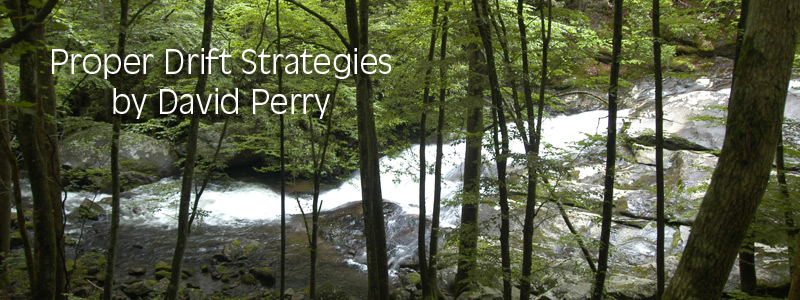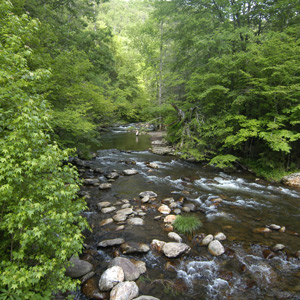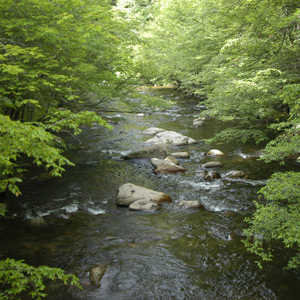
  | I learned how to read water very early in my angling life and will continue to learn how to read water the last time I step into a stream to fish. One of my best friends (and fly-fishing mentor) and me had a tradition of spending Friday afternoons on Lynn Camp Prong in the Great Smoky Mountains National Park. We would start fishing just above the footbridge and end our afternoon on top the cascades. At the conclusion of an early March, “Friday afternoon tradition,” we were sitting on the cascade smoking our victory cigars. Well, he was smoking his victory cigar for catching eight fish from one pool and who knows how many more that day. I was celebrating my one fish for the day. The mending lesson star! Ted there, on that rock, about half way through a good smoke. He began to question how I would fish the 20-yard section of river that we could still see from our position on that rock. At first, I thought that cigar was getting the best of him and wondered how I was going to carry him back to the truck before total darkness set in. But, I began to tell him how I would fish that stretch of the stream. After I finished my short story, he began to tell me his strategy. I heard the terms “seams and drifts.” For the elapsed time of a half of a lit cigar, he explained how he would fish that section of the river. That discussion took me on a technical journey down the river … and I have never looked at water the same way since that evening. Let’s discuss the proper drift. If we are talking fishing under an indicator, we can talk for hours about water depth and changes in currents. We can voice our opinions about which type of indicator works best for which type of condition. Determining if we need an indicator at all can be a half-day discussion. We can talk for two days about which dry fly works best in which condition. But, when talking about fly fishing, there is one thing that can make or break a day on the water … the proper drift. |
|---|
Reading the current between you and the fly is the first step of a proper drift. When wading, it is a good idea to step out of the water and observe the different current seams in order to make a mental note of how to fish a particular section of a stream or river. When wading small mountain streams and spring creeks, plan each step and take a look at the different currents within a couple of rod lengths of you. Plan your strategy for several hundred yards before getting back into the water. When fishing the tailwaters, observe the water within casting range and prepare the best plan to cover that water effectively. Ask yourself, “Where will the first mend be and where will the fly need to swing when the drift is over?” Always fish a section of the water knowing what the next move will be. The presentation of the fly is critical to a successful day on the river. Reading articles, watching videos and talking about presentations is a good place to start. But, to excel at mending and to properly present the fly my suggestion is before getting into the water, spend some time sitting on a rock, watching the currents and making a plan. Then, once you get in the water, adjust the speed of your presentation to that of the flow the current.
|
